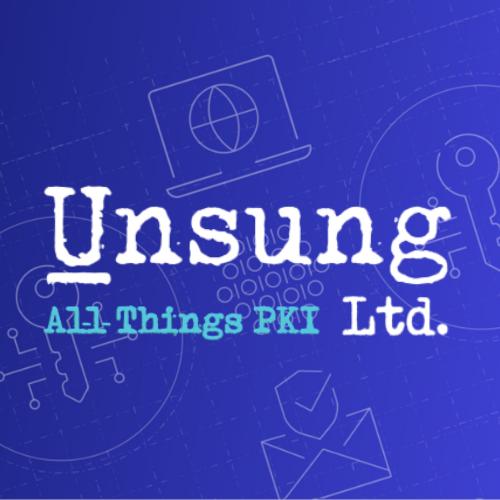Certificate Lifecycle Automation for Rail Networks: Protecting ETCS and Control Systems
Introduction
Rail transport is one of the UK’s most critical public services. Increasingly, it relies on digital systems to manage real-time signalling, train movement, routing decisions, and safety controls. The European Train Control System (ETCS) and other modern signalling architectures involve thousands of connected devices and software components that must communicate securely.
Public Key Infrastructure (PKI) and Certificate Lifecycle Management (CLM) provide the underlying trust that enables these systems to operate safely. Certificates verify device and system identities, prevent unauthorised instructions, and secure data communication across signalling networks.
As certificate volumes rise and rail assets are distributed across trackside, control centres, and cloud environments, automated CLM becomes essential.
Why Certificates Matter in Modern Signalling
ETCS and advanced signalling platforms rely on digital certificates to support functions including:
- Authentication of commands between control systems and trains
- Verification of firmware and software updates across signalling components
- Secure communication with connected IoT and trackside sensors
- Encryption of data transmitted between signalling zones and control centres
Without trusted certificates, critical operational systems may reject commands, misinterpret data, or fail to process instructions safely.
Risks When Certificate Management Is Manual or Fragmented
Many rail organisations still rely on manual certificate tracking or separate processes within individual programmes or suppliers. This creates risks including:
- Expired certificates triggering signalling faults or system downtime
- Unknown or untracked certificates embedded in legacy systems
- Delayed root cause analysis during incidents due to poor visibility
- Increased dependency on individual staff knowledge
- Higher likelihood of human error during renewal or replacement
In a rail environment, disruption linked to certificate failure can affect passenger services, freight operations, safety, and regulatory compliance.
Why Automated Certificate Lifecycle Management Is Required
Automated CLM enables rail operators to maintain control of certificates at scale, supporting:
- Full discovery and inventory of certificates across trackside, IT, OT, and cloud components
- Continuous monitoring for expiry, misconfiguration, or weak cryptography
- Automated renewal, provisioning, and revocation
- Faster updates to signalling systems and ETCS infrastructure
- Better coordination between operators, integrators, and technology suppliers
Automation reduces time spent on manual processes and prevents outages linked to unmanaged certificate dependencies.
Applying CLM in the Rail Environment
Rail networks can include a wide range of certificate-dependent systems, such as:
- ETCS onboard and trackside components
- Traffic management and automated routing platforms
- Interlocking systems and signalling control centres
- Condition monitoring sensors and maintenance systems
- Secure access and authentication for field engineers and contractors
These systems often operate for long periods without direct access, making remote certificate updates critical.
Strategic Benefits for Rail Operators
Strong PKI and CLM adoption supports:
- Reduced risk of signalling disruptions linked to certificate failure
- Improved operational continuity and passenger confidence
- Faster deployment of digital upgrades and ETCS expansion
- Clear audit history for compliance and safety investigations
- Better resilience against cyber threats targeting control systems
This creates a more reliable and sustainable foundation for rail modernisation programmes.
The Role of Unsung Ltd
Unsung Ltd supports rail organisations in improving PKI and CLM across signalling and digital rail programmes through:
- Certificate discovery across signalling, operational, and cloud systems
- PKI and CLM platform design, integration, and automation
- Governance frameworks aligned to safety and regulatory requirements
- Support for multi-supplier trust models and lifecycle ownership
- Crypto-agility and transition planning for future algorithm changes
The objective is to ensure rail operators can scale their digital infrastructure without increasing operational risk.
Conclusion
Digital signalling and rail control systems depend on secure communication and trusted device identity. Automated Certificate Lifecycle Management ensures that certificates can be monitored, renewed, and governed across complex and distributed architectures.
As UK rail organisations continue to adopt ETCS and further digitalisation, strong PKI and CLM capabilities will be essential for maintaining safe, reliable, and efficient services.



